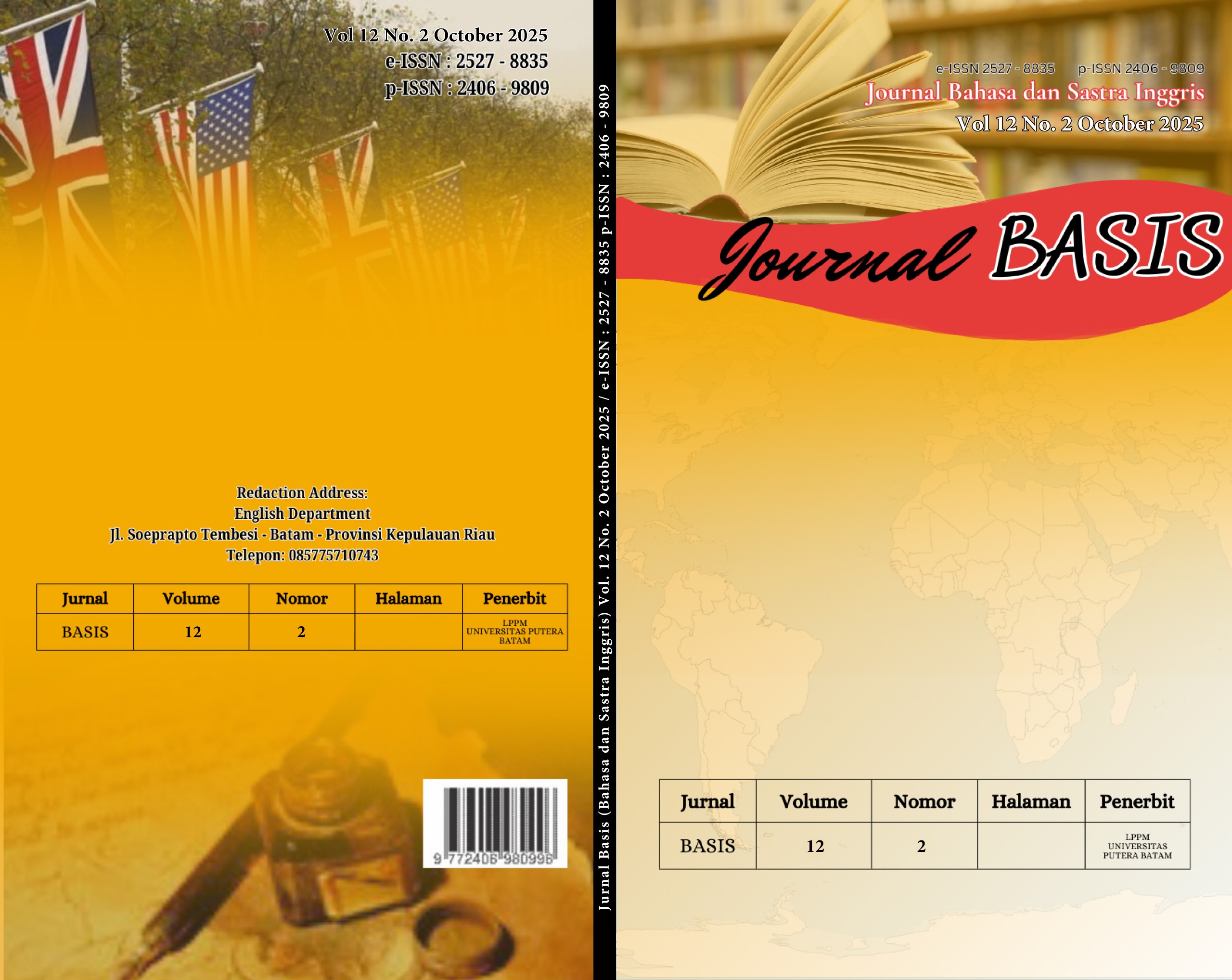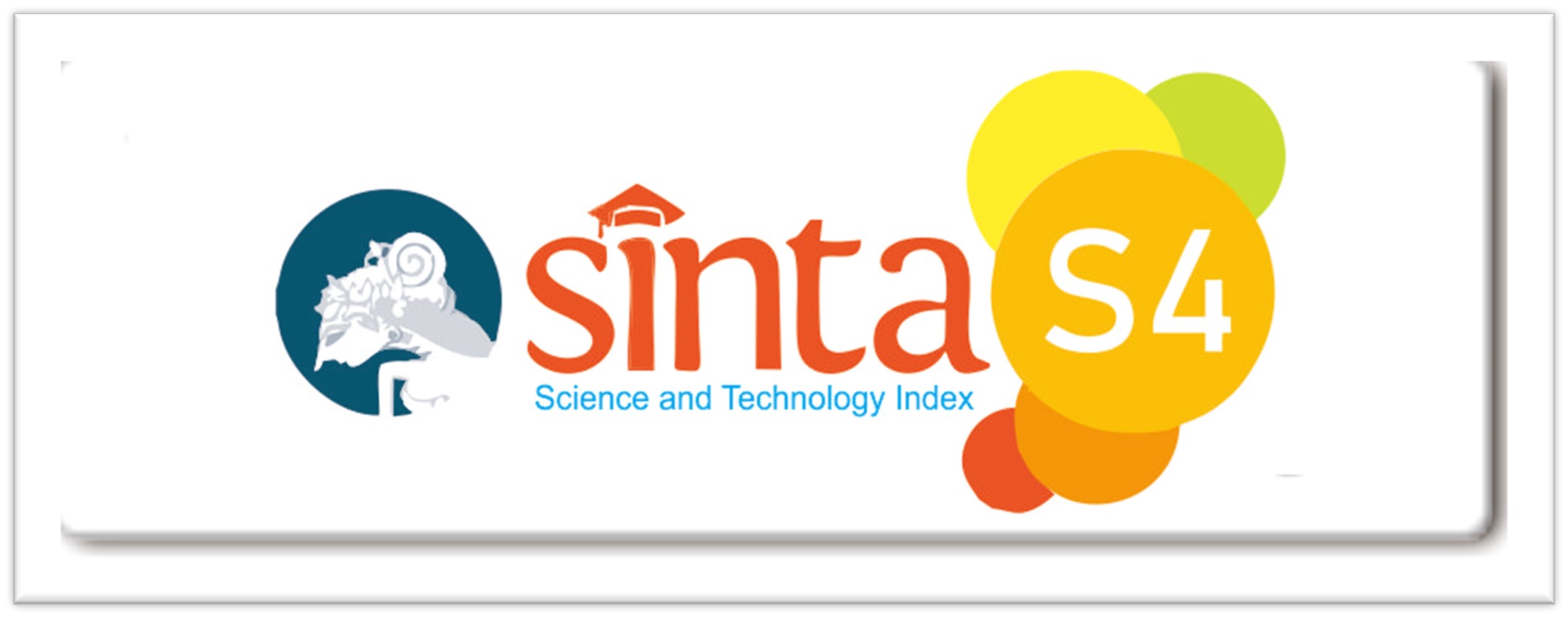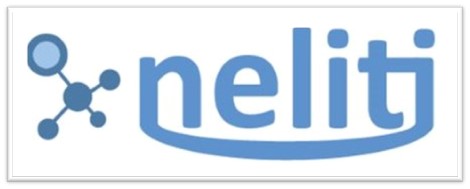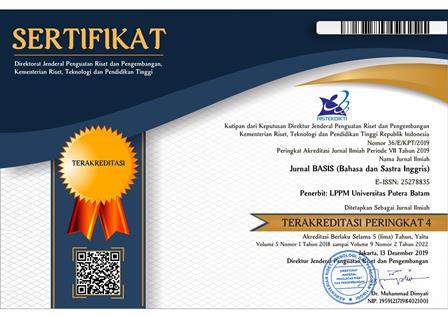SEMANTIC ANALYSIS OF FIGURATIVE LANGUAGE FOUND IN “FROZEN” MOVIE
DOI:
https://doi.org/10.33884/basisupb.v12i2.10066Keywords:
Semantics, Figurative Language, Meaning, MovieAbstract
This research investigates the use of figurative language in the animated “Frozen” movie, focusing on identifying the types and meanings of figurative expressions used by the characters. The significance of this study lies in its contribution to understanding how non-literal language enriches character dialogue and narrative depth in popular media. The study adopts a qualitative descriptive approach, with the data collected by transcribing the dialogue from the movie and analyzing it using the classification of figurative language proposed by literary theorists such as Johnson et al. (2017) and Keraf (2009). The researcher employed a non-participatory observation technique, identifying expressions based on their structure and contextual meaning. The findings revealed fifteen instances of figurative language consisting of simile (4), metonymy (3), metaphor (1), hyperbole (2), personification (3), and alliteration (2). These results highlight the creative use of language in “Frozen” movie, demonstrating how figurative expressions enhance emotional resonance and character development. This study recommends future research to explore other forms of figurative language or apply alternative theoretical frameworks to expand the scope of analysis.
References
Abrams, M. H., & Harpham, G. G. (2015). A glossary of literary terms. In A glossary of literary terms (11th ed.). MA: Cengage Learning.
Ambalegin, & Ariaonto, T. (2020). Figures Of Speech Reflecting Loathing. Journal BASIS, 7 No.2, 423–434.
Creswell, J. W. (2013). Qualitative inquiry and research design: Choosing among five approaches (3rd ed.). SAGE Publications.
Ismail, T., Nuraeni, S., & Kareviati, E. (2020). The Analysis of Figurative Language Used in the Lyric of Awaken by Maher Zain. Professional Journal of English Education, Vol 3, No. 2, 187–194.
Johnson, G., Arp, T. R., & Perrine, L. (2017). Perrine’s literature: structure, sound & sense (13th ed). Cengage Learning.
Abrams, M. H., & Harpham, G. G. (2015). A glossary of literary terms. In A glossary of literary terms (11th ed.). MA: Cengage Learning.
Ambalegin, & Ariaonto, T. (2020). Figures Of Speech Reflecting Loathing. Journal BASIS, 7 No.2, 423–434.
Creswell, J. W. (2013). Qualitative inquiry and research design: Choosing among five approaches (3rd ed.). SAGE Publications.
Ismail, T., Nuraeni, S., & Kareviati, E. (2020). The Analysis of Figurative Language Used in the Lyric of Awaken by Maher Zain. Professional Journal of English Education, Vol 3, No. 2, 187–194.
Johnson, G., Arp, T. R., & Perrine, L. (2017). Perrine’s literature: structure, sound & sense (13th ed). Cengage Learning.
Keraf, G. (2009). Diksi dan gaya bahasa. Jakarta: Gramedia Pustaka Utama.
Palupi, M. E. (2021). An Analysis of Figurative Language used in Poem of The Echoing Green by William Blake. Journal of English Language and Literature, Vol. 6(Issue 2), 9–20.
Rezeki, S. (2021). Figurative Language and Massage in Poems About Covid-19. Annual International Conference on Language and Literature (AICLL), 601–611.
Ullmann, S. (1962). An introduction to the science of meaning. In An introduction to the science of meaning. (7th ed.). Oxford: Basil Blackwell.













 JURNAL BASIS (BAHASA DAN SASTRA INGGRIS)
JURNAL BASIS (BAHASA DAN SASTRA INGGRIS)
